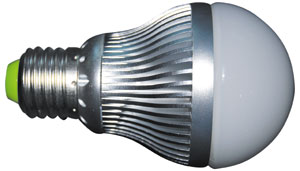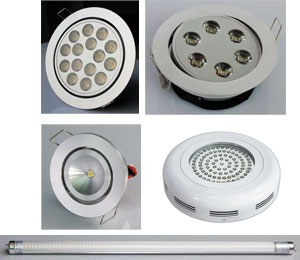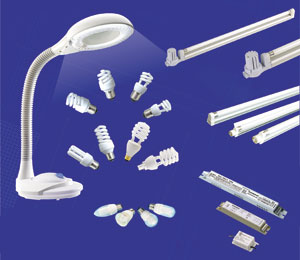Green Lighting Makers in China Upbeat About Outlook Despite Downturn
2009/01/13 | By Apple DingElectronic energy-saving lamps, available now for about 20 years in many upscale markets worldwide, are becoming more relevant today with increasing sensitivity to green issues as skyrocketing oil prices and highly promoted green policies in certain nations where the economy does not heavily rely on fossil fuel, and where there seems to be less apathy for the future health of the ecology. Such light is cast amid a set of undeniable, desirable features of electronic energy-saving lamps as compact fluorescent lamps (CFLs), including efficacy, good color rendition, power-saving, and durability. More headway is being made in developing other green lighting, with recent significant advancements made in LEDs, which some insiders claim may be the next wave in green lighting. LEDs are currently some of the most energy-efficient lighting, even exceeding CFLs.
Since the late 1970s, energy conservation has been prioritized as not only a green policy but also politically-correct way to build popularity for movers and shakers, who have found easy fuel for energy-efficiency argument in one of the biggest users of electricity in the U.S.: The U.S. Department of Energy's statistics show that American office building users pay about one-third of the national total, with lighting burning over US$75 billion annually of the overall power bill, or a quarter of the national total.
Energy-saving lamps can more than significantly help corporate power users cut power consumption; while a study by the U.S. Department of Energy shows that such lighting can actually enhance work efficiency by allowing personalized setting of luminosity to comfortable levels; and these lamps, according to another study, can also reduce frequency of eye fatigue and headache. Therefore, many businesses have installed energy-saving lighting.
A reasonable deduction would be, given the above findings, that energy-efficient lighting has a potentially gigantic market in China, where 420 million households exist, and millions more commercial outlets and public spaces, with the most promising aspect being that China is often reported to be the next world-leading economy and consumer market.
A handful of mainland Chinese makers of energy-saving lamps are aware of such market potential of their products and are profiled below.
Brilliance Technologies Co., Ltd.
A leading LED (light emitting diode) lamp maker, Brilliance Technologies, will roll out a new dimmable lamp, featuring higher safety thanks to its precision ceramic body with enhanced heat-endurance, good insulation, and conductivity.

Considering the strong demand for LED lighting, Cai Minhan, company manager, is upbeat about corporate development as long as it continues to build quality products that meet market needs.
Quasar Light Co., Ltd.
Besides having just launched a new T8 LED lamp that has been Hi-pot tested at 4000 volts and American UL approved, Quasar Light is also applying for CE and RoHS certification. Not only boasting the usual merits of fluorescent lighting, this new model also features CREE light tube that has upgraded aesthetics.

As an OEM/ODM (original equipment manufacturer/original design manufacturer) who consistently offers quality products, Quasar Lighting has managed to achieve steady sales growth even amid the global financial crisis. In fact, the senior management is confident of its prospects, citing high quality, reasonable prices, product reliability, as well as close links with trading partners.
Shunde Corso Electronics Co., Ltd.
A joint venture between Chinese and foreign businesses, Shunde Corso operates a 10,000-square-meter plant that turns out home-appliances and lighting.

The company's electronic ballasts meet global quality certifications, including TUV, CE, EMC, UL, FCC, and 3C, and are typically used in ceiling lamps, desk lamps, and wall lamps; while its energy-saving lamps are CE, UL, and CUL certified, as well as being labeled "Energy Star," a logo given by the U.S. Department of Energy showing a lighting product's energy-efficiency.




